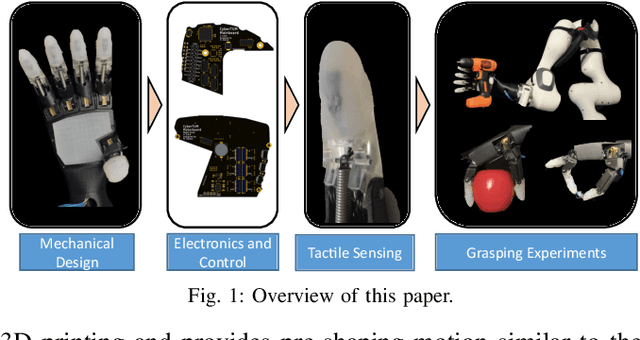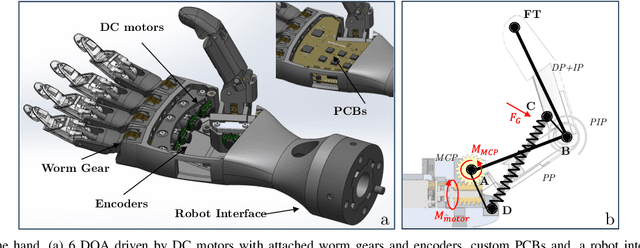Sonja Groß
Stretchable Capacitive and Resistive Strain Sensors: Accessible Manufacturing Using Direct Ink Writing
Feb 25, 2025Abstract:As robotics advances toward integrating soft structures, anthropomorphic shapes, and complex tasks, soft and highly stretchable mechanotransducers are becoming essential. To reliably measure tactile and proprioceptive data while ensuring shape conformability, stretchability, and adaptability, researchers have explored diverse transduction principles alongside scalable and versatile manufacturing techniques. Nonetheless, many current methods for stretchable sensors are designed to produce a single sensor configuration, thereby limiting design flexibility. Here, we present an accessible, flexible, printing-based fabrication approach for customizable, stretchable sensors. Our method employs a custom-built printhead integrated with a commercial 3D printer to enable direct ink writing (DIW) of conductive ink onto cured silicone substrates. A layer-wise fabrication process, facilitated by stackable trays, allows for the deposition of multiple liquid conductive ink layers within a silicone matrix. To demonstrate the method's capacity for high design flexibility, we fabricate and evaluate both capacitive and resistive strain sensor morphologies. Experimental characterization showed that the capacitive strain sensor possesses high linearity (R^2 = 0.99), high sensitivity near the 1.0 theoretical limit (GF = 0.95), minimal hysteresis (DH = 1.36%), and large stretchability (550%), comparable to state-of-the-art stretchable strain sensors reported in the literature.
OPENGRASP-LITE Version 1.0: A Tactile Artificial Hand with a Compliant Linkage Mechanism
Aug 05, 2024



Abstract:Recent research has seen notable progress in the development of linkage-based artificial hands. While previous designs have focused on adaptive grasping, dexterity and biomimetic artificial skin, only a few systems have proposed a lightweight, accessible solution integrating tactile sensing with a compliant linkage-based mechanism. This paper introduces OPENGRASP LITE, an open-source, highly integrated, tactile, and lightweight artificial hand. Leveraging compliant linkage systems and MEMS barometer-based tactile sensing, it offers versatile grasping capabilities with six degrees of actuation. By providing tactile sensors and enabling soft grasping, it serves as an accessible platform for further research in tactile artificial hands.
 Add to Chrome
Add to Chrome Add to Firefox
Add to Firefox Add to Edge
Add to Edge